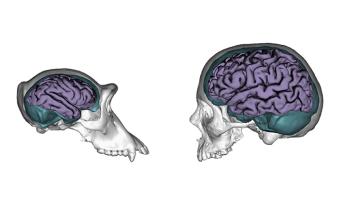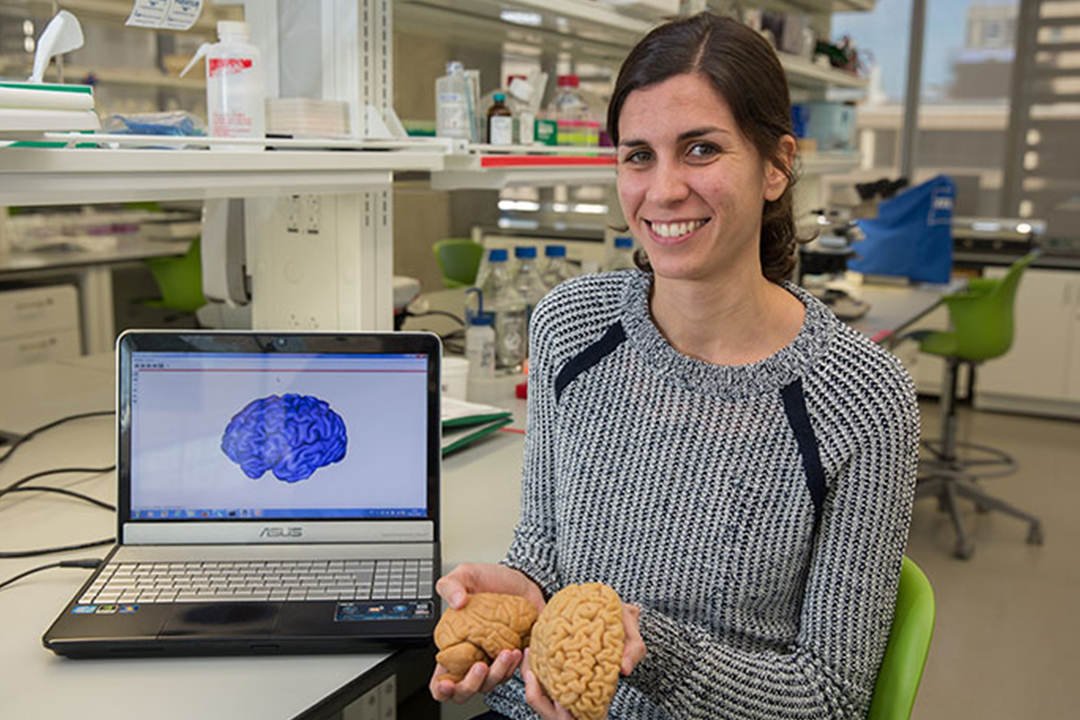What is it about the human brain that makes us so different from chimpanzees, our closest living relatives? Lead by postdoctoral scientist Aida Gómez-Robles from the Center for the Advanced Study of Human Paleobiology, a team of researchers may have unearthed another piece of that evolutionary puzzle. In a new study, scientists discovered that human brains exhibit more plasticity—the ability to be molded by the environment—than chimpanzee brains, providing an important clue as to why humans are so capable of adapting to various conditions and cultures.
“We found that the anatomy of the chimpanzee brain is more strongly controlled by genes than that of human brains, suggesting that the human brain is extensively shaped by its environment no matter its genetics,” said Gómez-Robles, lead author on the first-of-its-kind study, published in the Proceedings of the National Academy of Sciences. “So while genetics determined human and chimpanzee brain size, it isn’t as much of a factor for human cerebral organization as it is for chimpanzees.”

Three-dimensional models of chimpanzee and human skulls showing their endocranial casts (teal) and brains (purple). (Photo: Jose Manual de la Cuetara/Aida Gomez-Robles) |
The study represents the first ever scientific attempt to examine the heritability of brain organization in chimpanzees compared to humans. The research team looked at 218 human brains and 206 chimpanzee brains to compare two factors: brain size and organization as related to genetic similarity. The human brains were from twins (identical and fraternal) or siblings. The chimpanzee brains had a variety of kinship relationships, including mothers and offspring or half siblings.
The brain sizes for both humans and chimpanzees were greatly influenced by genetics, the study discovered. But the findings related to brain organization were different for chimpanzees and humans. In chimpanzees, brain organization is also highly heritable. But the human brain appears to be much more responsive to environmental influences.
“It’s a characteristic that facilitates the constant adaptation of the human brain and behavior to the changing environment, which includes our social and cultural context,” Gómez-Robles explained.


